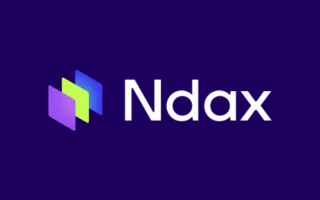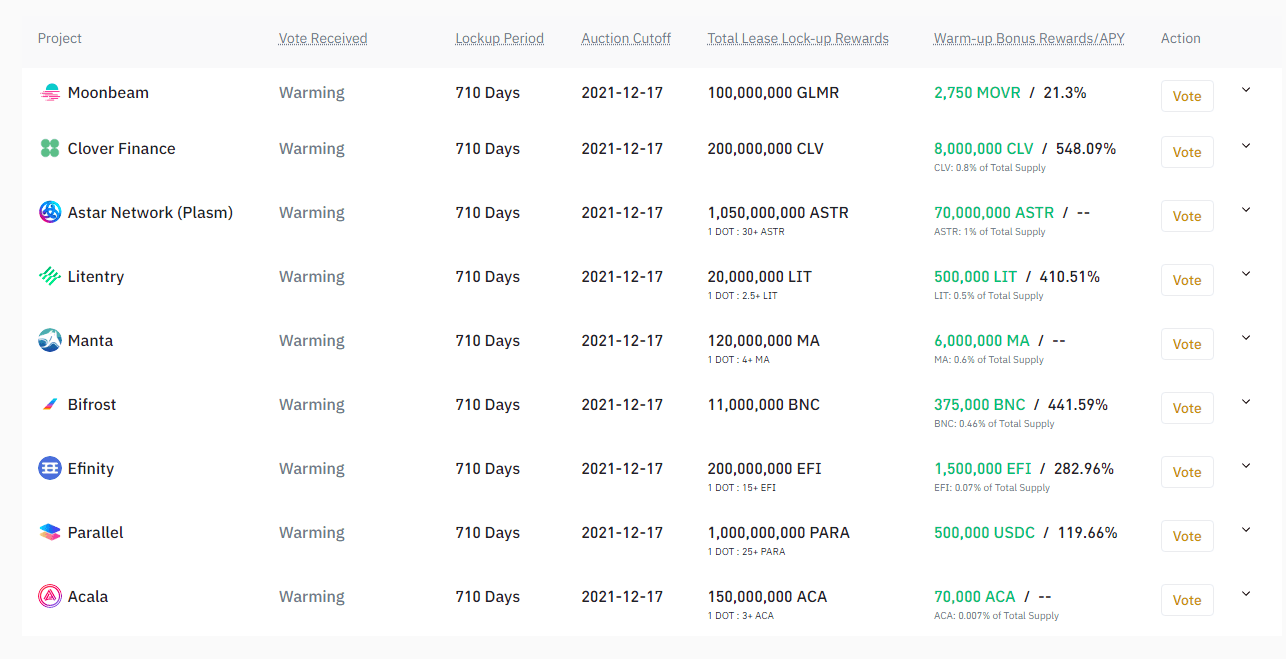Ndax Cryptocurrency Trading Platform

- Buy & sell DOT and 30+ other cryptocurrencies easily and securely.
- Pay no hidden price mark-ups. Just one low fee.
- Deposit CAD easily through Interac eTransfer or Wire Transfer.
Polkadot is a third-generation blockchain network with lofty ambitions. It aims to solve the major pain points of the traditional blockchain ecosystem by providing a new way to solve issues surrounding scaling, security, blockchain creation and cross-blockchain transfers.
Polkadot does this through the use of parachains – an interoperable network of blockchains each with their own unique rules and functionality. This is a distinct departure from blockchains such as Ethereum and Cardano, which focus on Smart Contracts to achieve similar results.
Unlike Bitcoin, which uses a proof-of-work (PoW) consensus algorithm to validate transactions and mine new tokens, Polkadot uses a nominated proof-of-stake (NPoS) system in which users deposit DOT tokens into d addresses in order to validate the chain and earn rewards. This is a process known as staking.
This guide will explore the various ways that you can stake DOT tokens to earn rewards, whether by directly staking on chain or through some of the more novel methods, such as using an exchange or DeFi service.
To explain staking, let's look at a traditional savings account. Each month, you deposit cash into your account and your bank pays you interest on your savings. It pays you this interest because it's using your money to make money. This is one of the ways the banking system works.
Staking works in a similar way. The funds that you lock in, or stake, are used to help validate transactions on the Polkadot network. You receive your "interest" from these tokens in the form of DOT rewards.
You can stake Polkadot in two ways: as a validator or a nominator. Validators are those who create the blocks, nominators are those who vote on who gets to be a validator. If the validator that you've voted for with one of your 16 votes wins a block, you get part of their bounty.
Similarly to Bitcoin mining, staking Polkadot as a validator requires a high level of technical know-how and investment in a masternode that runs 24/7 before you can make a profit.
Alternatively, anyone can stake Polkadot as a nominator without any technical expertise or significant investment in equipment. You can do this by depositing funds on a cryptocurrency exchange or by locking them in a wallet.
Lastly, while it isn't technically staking, another way to earn passive rewards from simply holding Polkadot is to transfer it to one of many lending platforms such as Celsius or Crypto.com, where they use it to lend to other investors, earning you a variable amount over your deposit term.
The easiest way to get started with Polkadot staking is through a cryptocurrency exchange such as Binance or Kraken. Using an exchange to stake is as easy as buying DOT tokens, picking your favourite exchange and depositing your tokens into your Polkadot wallet. Once you have tokens in your wallet, it's easy to start staking.
Here's how to stake Polkadot on Binance:
Pros of staking on an exchange
Another way to stake Polkadot is with a wallet or node. You can choose from physical hardware wallets such as a Ledger to browser-based wallets like Polkadot JS and mobile wallets like imToken.
It's straightforward to stake with a mobile wallet such as imToken:
Often reserved for the most hardcore fans, the most complex way to stake Polkadot is via your own masternode set-up as a validator. Even Polkadot's help section recommends having "significant system administration experience" before running your own validator.
Since a masternode is always synced with the blockchain, it must remain running at all times with both the speed and the capacity to cope with this load. Given this, those wishing to go down the masternode route will require significant investment in either hardware or virtual machines (VPS).
Likewise, to be an active validator, you will be required to stake around 2 million DOT tokens to take part.
Polkadot's unique parachain-based protocol presents a new way for DOT holders to stake their tokens in exchange for rewards. This can be done by participating in a Parachain Slot Auction.
A slot auction is based on Polkadot's two underlying blockchain technologies – parachains and the relay chain.
Parachains rely on the relay chain to execute transactions, but the current structure only supports 100 parachains connected to the main Polkadot network at any given time. As new projects and software being developed on the Polkadot network need to be hosted on a parachain, this means that there is a lot of competition for not many slots.
Polkadot has implemented a "candle auction" system to solve this issue and fairly disseminate slots. Essentially, DOT holders can lock in their tokens to support a project they believe should be hosted on a parachain. The project developer will often incentivise bidding on their application by offering airdropped tokens or other rewards.
The auction will then stop at a randod time, granting whichever project had the most DOT support access to the parachain.
You can easily participate in a Polkadot parachain auction through popular cryptocurrency exchanges such as Binance.
First, you have to sign up for an account on Binance. If you don't already own any DOT tokens, you can purchase them on the platform. Otherwise, transfer the tokens to your Binance wallet address.
Head over to the Binance Earn tab, where you will see the option to vote on various proposed projects. From here, you can read about each individual project, their goals, the lock-up period and the potential rewards on offer.
Once a decision has been made, all you have to do is click "Vote" on the desired project and input the amount of DOT you'd like to stake. That's all there is to it.
This process can be replicated on other exchanges, including Kraken and Houbi.
The easiest way to stake DOT for a Parachain Auction is through an exchange, but more advanced users can participate directly on-chain using Polkadot-js. This method is only recommended for experienced crypto holders and requires a degree of technological know-how.
Participating in a parachain auction allows users invested in the Polkadot network to directly contribute to the blockchain's future. They can become involved in the community and support projects they believe will help improve the Polkadot ecosystem.
Lock-in periods for staked tokens are quite lengthy – generally 2 years. In this sense, participating in an auction is almost like buying a term deposit. The minimum stake for a parachain auction is also quite low compared to some other staking opportunities. Interested holders can vote on a project with as little as 0.1 DOT.
In return for locking your precious DOT away for so long, you are rewarded with quite lucrative interest rates. In the first parachain auction (November 2021) projects paid 20-550% APY to attract crowd lenders.

As mentioned above, you can use platforms such as exchanges, lending services and certain DeFi protocols to deposit your DOT tokens in return for rewards. While not all of these services provide staking in the true sense (depositing tokens to secure the blockchain), they provide similar rewards.
To make comparing even easier we came up with the Finder Score. Supported coins, account fees and features across 28 cryptocurrency trading platforms are all weighted and scaled to produce a score out of 10. The higher the score the better the exchange - simple.
The good thing about staking Polkadot is that it's almost entirely passive income. Once you've deposited and locked in your stake, you start earning.
While how much you can earn varies depending on how much commission your chosen validators tend to pay out, the number of validators and the number of tokens you initially staked, the returns will always be greater than if you had simply left your tokens idling in your wallet.
Staking Polkadot is an easy way to earn additional passive income in a relatively safe, low-risk way. However, there is one core drawback: the risk of being penalised and fined if one of the people (validators) that you have nominated chooses to misbehave or becomes reckless with the protocol.
Used to boost network security, "slashing" reinforces the need to nominate validators with a strong performance record.
There are three key reasons why cryptocurrency fans enjoy staking Polkadot:
As with many cryptocurrency projects, there are some things you need to remain aware of:
Polkadot is a blockchain project that allows you to earn rewards by staking DOT tokens on a cryptocurrency exchange or within a wallet. These tokens are locked in for a period of time and used by validators to facilitate network transactions.
For those interested in holding cryptocurrency for the long term, this is a passive way to earn additional DOT tokens without a significant amount of investment or effort.